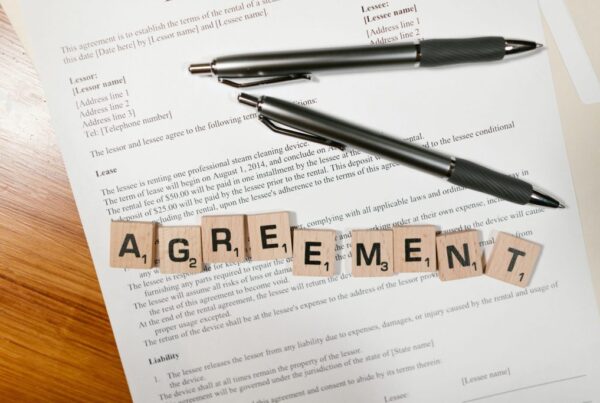This post originally appeared on SimonCRE Insights Blog and is republished with permission. Find out how to syndicate your content with theBrokerList.
Congratulations on your plans to buy a commercial real estate property. Even if it’s not your first, it can still be overwhelming. But when it comes to the overall process, there are typical stages to follow.
Here we provide a high-level overview of each stage to help you understand what to expect, and then get more granular with checklist items for the highly critical due diligence period. As a bonus, we’ve included some tips on what to look for to uncover the best multi-tenant center specific opportunities, if that is of interest to you.
THE STAGES OF BUYING A COMMERCIAL PROPERTY
When you read those “most wealthiest people in the world” lists, you should notice a pattern that the majority of its recipients are involved in commercial real estate in some form. So, clearly investing in real estate allows for some of the highest return rates. 
However, keep in mind: “If you don’t know your numbers, you don’t know your business” – Marcus Lemonis, self-made millionaire CEO of Camping World, host of The Profit, and serial entrepreneur. This quote can be directly applied to much in life, but especially the real estate due diligence process.
Here’s an overview of the process of buying a commercial property, whether it’s a single-tenant net lease building or a regional shopping center.
Identify the Opportunity
First things first, before jumping into purchasing the first commercial property you see, conduct a myriad of research, stay updated with industry news, and even partner with a commercial real estate broker. Make sure to spend adequate time securing the right team (broker, lender, financial analyst, legal, etc.)
Then, set your specific investment criteria and your timing. For example, is this for a 1031 Exchange for tax deferral? If so, ensure the purchase would check all the required boxes during the restricted time frame. Whittle down your list of prospective properties by analyzing market research for each.
Undergo Underwriting
This stage consists of conducting an in-depth financial analysis with current data (including occupancy, rental income stream, taxes, and utilities) as well as assumptions for future performance. Also, unless you will be a cash buyer, an equity source and debt source or loan will be needed. Determine whether you’ll be able to obtain the capital necessary to acquire the property.
Important answers to uncover:
-
-
- Why is the property for sale?
- Should your strategy be more aggressive or conservative (based on current market conditions)?
- What are the current tenants’ rents? Can they be increased?
- What would be your expected ROI?
- Can expenses be reduced?
- What would be your exit strategy?
-
Submit the LOI
The Letter of Intent to purchase real estate represents the first formal action taken between a seller and a buyer. It addresses major points of interest/concern to be negotiated over an agreed upon period of time, resulting in the final Purchase and Sale Agreement. You should familiarize yourself with the main terms such as cap rate, NOI, ROI, debt coverage ratio, types of leases, etc.
Here are some less common, but important lease terms to know before buying a multi-tenant property.
Complete Due Diligence
This time-restrained period during the commercial property buying process has the ultimate goal of revealing the rights, boundary lines, accepted future uses, development options, and more. Due diligence will also expose both reported and unknown issues related to title, surveys, easements, encumbrances, liens, or restrictions that might affect the use of the property or its development. Restriction examples could be licensing requirements, environmental issues, zoning restrictions or legal compliance.
One critical step to not skip over in this stage is to interview the current tenants. For instance, if there was a plumbing issue for a tenant a month ago and the existing owner (seller) has not been responsive, the problem will ultimately become your responsibility when you close and become the landlord.
Pre-Close
This represents the point in the process where most prospective buyers are removed from the seller’s picks due to bid price, lack of ability to execute, or buyers pulling out. The remaining few prospects are instructed to submit their best and final offers.
The “winning” buyer then submits the PSA, or the contract created between the buyer and the seller to acknowledge all relevant information about the property exchanging hands and each parties’ rights, obligations and liabilities.
Close
Once this final stage of the acquisition process is reached, an escrow agent is hired to hold deposits and any other funds in a third-party account until all preconditions in the escrow agreement are met by both parties.
Unlike when closing on a home, commercial escrows are much more complex and formal. In fact, it is common for the capital to come from several sources instead. Commercial transactions have far less regulations than residential, including no Real Estate Settlement Procedures Act (RESPA), and the paperwork is more customized.
As mentioned, this is just the framework for a successful commercial property purchase. Even if it’s not your first, it is always a more complex process so keep these details and tips in mind.
DUE DILIGENCE CHECKLIST FOR BUYING COMMERCIAL REAL ESTATE
Conducting due diligence should always be a thorough, intricate process — whether it’s referring to buying land during the commercial real estate development process or buying real estate, such as a net lease investment or a regional shopping center — it’s critical one spends ample time understanding the intricacies. 
Also, no two deals are the same. Unlocking value in commercial real estate requires discipline. Perhaps the one similarity though, is that the preliminary due diligence and underwriting are critical pieces to ensuring a positive ROI.
While not all-inclusive, here’s a useful list of the main items to cover during the due diligence of a commercial real estate acquisition to avoid costly errors.
Preliminary Due Diligence
This beginning stage of the due diligence process may sound more minor, but it’s quite the opposite. Addressing the “low hanging fruit” in the early stages will ultimately lead to determining specific key performance metrics when the in-depth analyses are required.
Items:
-
-
- Most current title policy (with any related documents)
- ALTA and topographic surveys
- Any construction plans, including architectural, engineering, as-built, etc.
- Environmental Reports (Phase I and Phase II, if applicable) and any others
- Property Condition Report
- List of any personal property within the premises
- List of all permits, certificates of occupancy, warranties, government notices, special assessments, code violations and unexpired guaranties
- Any pending litigation impacting the property
- Real estate tax bills from the last 3 years, including special assessments or incentives
- Utility bills from the past two years
- Existing insurance policies (and any claims)
- CAM recommendations
- Capital expenditure expenses verification
-
Underwriting
This portion of the due diligence process involves an even more in-depth study about the prospective property. The timeframe for this study period, or feasibility determination, can typically be 30 days or more.
Items:
-
-
- Legal description
- Zoning Compliance Certificate
- Knowledge of any liens
- Encroachments
- Appraisals
- Covenants, conditions, restrictions, reservations and easements
- Tenant profile(s) with credit rating
- Tenant(s) lease(s) with any amendments and abstracts
- SNDA(s)
- Rent roll, including CAM, security deposits, and real estate taxes paid by tenant
- Site visit (critical)
- Tenant interview(s)
- Local municipality interviews
- Demographic research
- Immediate competitor analysis
- Comparable sale data
- Comparable lease data
- Cash flow analysis (typically evaluate on a 1,3,5, and 10 year hold scenario)
-
Refer to the points above as supplemental material to help you make the most informed decision on your next commercial real estate acquisition.
*BONUS*
DIGGING UP THE BEST CORNERS:
BUYING A RETAIL CENTER
When considering buying a retail center or multi-tenant investment property, there’s much more to explore than just the property age and income stream or cap rate. So, how do you dig up the best corner of a neighborhood? 
Here are some tips before you buy an established or newly built retail center.
Neighborhood/Area
A good starting point before even opening up the chapter of due diligence is of course to analyze the location. How would you rate its current access and visibility? Equally important, what is the current reputation of the area? But keep in mind, corners can and do change with some redevelopment and re-tenanting.
For example, a Phoenix neighborhood center underwent a major remodel from SimonCRE, which in turn helped revive that corner for the community.
On that note of development, are there any proposed projects in the area (i.e. housing, hospitality, office, or more retail)? Or, are there any planned public improvements by jurisdiction? It is also worth noting if there are any economic redevelopment incentives available by the municipality that would help make development work easier.
Foot Traffic
How many customers does the center currently get on a daily basis? As mentioned, visibility or how well the anchor can be seen from the road is critical. Take into account the occupancy level, but also the types of tenants.
For example, a barber shop may receive many customers (high-foot traffic) per day that only take up a parking spot for half an hour; whereas an urgent care might have their patients occupying the parking lot for an hour or more and less appointments per day.
Consider whether the current infrastructure in the area can accommodate any increased demand? This is important to know when your goal is to increase occupancy. Are there nearby competitors of your tenants’ that could steal foot traffic easily?
Tenant Mix
It’s not enough to just know the occupancy rate. You need to know who makes up the center in order to get an accurate understanding. Does the center have many corporate high-credit tenants, or is the majority more mom-and-pop shops?
While you analyze the mix of businesses, look for any exclusive use clauses in the leases of the existing tenants of the shopping center.
For example, if there is already a suite leased to a coffee shop chain you may not be able to lease one of the vacant suites to a local coffee shop user.
In the same token, are there any restrictive uses woven into their leases? For instance, is there any language that prohibits a fitness user to be signed into the center due to the amount of parking that would be taken up? Use restrictions that originated from surrounding properties can also be recorded against the property that you are vetting out for purchase.
For example, Walmart restricts a lot of uses when they are the first tenant of a large center, and those restrictions run with the land (even if portions of the land are owned by different entities).
Do any of the tenants have a specified co-tenancy clause? If so, this could mean if your anchor leaves, this tenant has the contractual right to vacate as well. Here are other important lease items you may not already know about when it comes to a multi-tenant center.
Work Needed
Even properties in the best of locations may need a face lift (or new roof) that could add up, so be sure to factor that into your purchase decision. Your due diligence efforts should include a physical component. Make certain that you create a budget for both immediate and long-term maintenance requirements (i.e. HVAC, roof, parking lot, etc.).
If you don’t have much experience in the development portion, or even the passion for that matter, this is where the experts can come in. Consider hiring a developer that has specific knowledge of a successful redevelopment process for the market the property is in to alleviate the risk of cost overruns or construction challenges.
So, when exploring a new retail center investment opportunity, be sure to follow the main items and examples listed above before committing to the close.
This general overview of the commercial real estate buying process, along with the bonus material for vetting out retail centers, will be important to keep in mind for your next transaction. Also, don’t forget to check off the items listed for the preliminary due diligence and underwriting periods.




